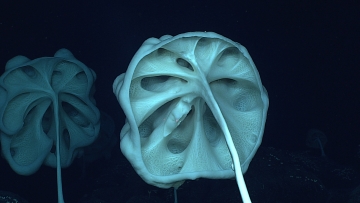771225_Deep Antibiotics_360 px width.jpg

Bacteria collected from a deep-sea sponge, similar to the one pictured, contain antibiotic compounds effective against E. coli. Credit: NOAA Office of Ocean Exploration and Research
About three-quarters of all the antibiotics in use today were developed from a type of bacteria that lives in the soil. But nasty bacteria are becoming more resistant to those treatments. So scientists are scouring the world for sources of new antibiotics—including the ocean floor. And they recently found a couple of good candidates at the bottom of the Arctic Ocean, off the coast of Norway.
Biologists gathered many organisms during a research cruise in 2020. And they collected bacteria from four of those organisms, including a type of sponge and a scallop. The bacteria are similar to the soil-based varieties that have yielded all the antibiotics. But under the extreme pressure, cold, and darkness in the deep sea, they’ve developed many chemical compounds that aren’t seen in their land-based cousins.
The researchers isolated some of those compounds. And they tested them against a strain of E. coli bacteria—a form that causes severe diarrhea in young children, especially in the developing world.
Two of the compounds did a good job of stopping the E. coli. And one of them did it without killing the dangerous bacteria. That’s important because the E. coli isn’t as likely to become resistant to the compounds that don’t kill it.
There’s still a lot of work to be done to develop the helpful compound into a treatment for people. But the research demonstrates that we might find many new treatments for human diseases in the world’s oceans.

